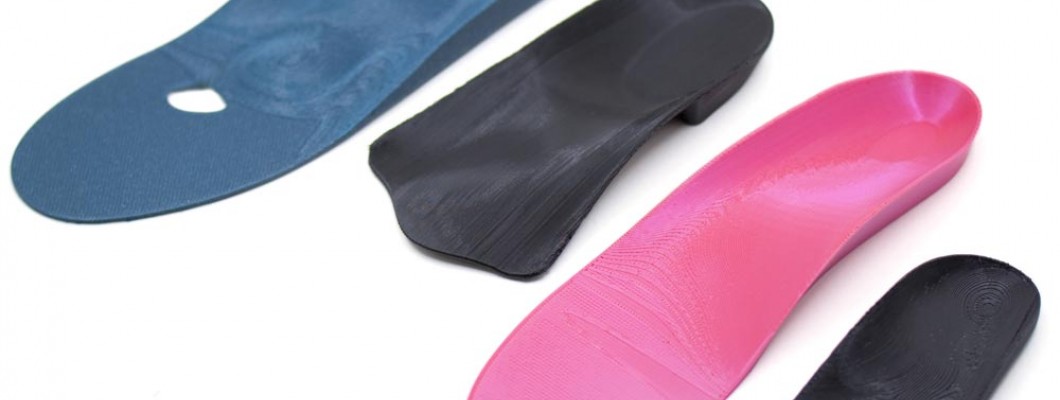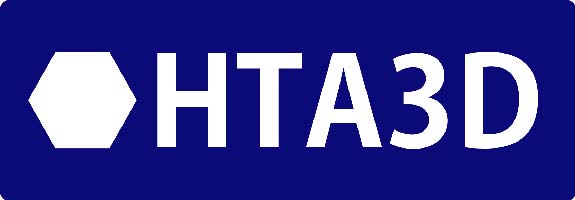
3D printing is transforming the field of podiatry, allowing professionals to create customized, fast and efficient solutions for their patients. We explain how to take advantage of this technology, keep reading if you are interested in learning more.

What is an Orthotic Insole?
An orthotic insole is a medical device designed to be placed inside footwear in order to correct or alleviate problems with the feet, legs, or even overall body posture. These custom insoles help to properly distribute the weight of the body when walking or standing, providing support, cushioning, and proper alignment.
Functions of Orthotic Insoles
- Postural correction
They help align the feet and body, correcting incorrect postures. - Pain relief:
They reduce stress on specific areas of the foot, alleviating conditions such as plantar fasciitis or arch pain. - Injury prevention:
By providing additional support, they help prevent sports-related or overuse injuries. - Improved mobility:
They facilitate proper foot movement, improving comfort and performance when walking or running.
Why choose 3D printing in podiatry?
The traditional creation of podiatric insoles, which is usually a handcrafted process, presents limitations that 3D printing can solve:
- Greater precision
3D printing makes it possible to design and manufacture devices with millimetric tolerances, something difficult to achieve using manual methods. Each template fits perfectly to the patient's measurements. - Time reduction
While the artisanal method can take several days or even weeks, 3D printing can deliver results in a matter of hours. This reduces waiting times and improves the patient experience. - Repeatability and consistency
Manual processes often rely on the skill of the technician, which can lead to variations in results. With 3D printing, each insole is manufactured with the same quality and precision. - Saving materials
Traditional methods create more waste when molding and cutting. With 3D printing, only the material needed for each design is used. - Adaptability of materials
3D technology allows working with technical filaments such as PP or flexible materials, offering options that combine comfort and durability and versatility for each case.

The Different Shores in Orthotic Insoles
In the manufacture of orthotic insoles, the hardness of the material is crucial to offer the right support. This hardness is measured in Shore degrees, specifically on the Shore A scale, which evaluates flexible materials such as rubbers and elastomers.
What is Shore A?
The Shore A scale measures the material's resistance to indentation. Values range from 0 (very soft) to 100 (very hard). In the context of orthotic insoles, different Shore A ranges are used to meet the specific needs of each patient.
Shore A Ranges in Orthotic Insoles
- Shore A 15-30:
This range is used for very soft insoles, ideal for patients with sensitivity issues, such as diabetics, or for those who need maximum cushioning. - Shore A 30-50:
Offers a balance between softness and support, commonly used for insoles designed for conditions such as plantar fasciitis or to provide additional support in low arches. - Shore A 50-70:
Firmer material, ideal for insoles that require significant structural support, such as in cases of severe pronation or supination. - Shore A 70-90:
Used for very rigid insoles, these are necessary in cases where maximum control of foot movement is sought or for sports insoles that support heavy loads.
One of the great challenges in 3D printing of orthotic insoles is the ability to work with materials of different hardness levels (Shore). Many 3D printers on the market are not optimized to easily handle hardness below 90A, which limits the customization and effectiveness of the insoles.
Our Shore Printing Advantage
Ability to print the lowest Shore for 3D printing such as the Shore 70A: Our printers are specially designed to work efficiently with softer, more flexible materials, such as Shore 70A, which are ideal for insoles that require a combination of comfort and support. This level of customization is difficult to achieve with standard 3D printers.
While many competing printers struggle to print materials below 85-90A, most cannot successfully go below these levels.
This flexibility in printing different Shore levels sets us apart, allowing podiatrists to offer truly customized solutions to their patients, something that is not easy to achieve with conventional printers.


Two Options for your Podiatric Consultation
1. Buy your specialized 3D printer
If you want to have complete control of the manufacturing process in your practice, our 3D printers are the best choice.
- Technical material compatibility
Works with different Shore flexible filaments and PP for comfortable and durable devices. - Large print size
With a surface of 33x33 cm, you can print any design without restrictions. - Independence and savings
Manufacturing your devices directly allows you to reduce costs and offer customized solutions immediately. - Easy to use
Our printers are designed to be intuitive and we have specialized technical support.
2. We Print for You
If you prefer to focus on caring for your patients, you can send us your designs or specifications, and we will take care of the rest.
- Fast and accurate results
We deliver your templates in a short time. - Guaranteed quality
We work with the same technical materials that our printers offer, ensuring comfortable and long-lasting results. - No initial investment
You do not need to purchase equipment or worry about printing logistics.

You can see information about our 3D Printer HPRO clicking here.
Workflow with our solutions
- Scanning & Insole Design
Take exact patient measurements using 3D scanners and software-assisted design to model insoles. Choose the option you like best on the market. - Printing
If you have your printer, set it up to work with the right materials and start manufacturing.
If you use our service, send us the designs, and we will print accurately on high-quality materials. - Delivery to Patient
Get custom devices that perfectly fit your patients' needs.
Key differences compared to artisanal creation
- Fast turnaround: From design to finished product in hours.
- Consistent results: Each device is manufactured with the same precision.
- Greater adaptability: More advanced designs and materials for specific needs.
- Cost efficiency: Save time and materials with a cleaner, more controlled process.
Innovation from Spain for professionals
We are located in Spain and offer fast shipping and specialized technical support. Whether you buy your 3D printer or rely on our printing service, you will be able to offer your patients innovative, comfortable and durable devices, leaving behind the limitations of traditional methods.
Write to us for more information.
Let's transform podiatric care together with 3D printing technology!

Leave a Comment